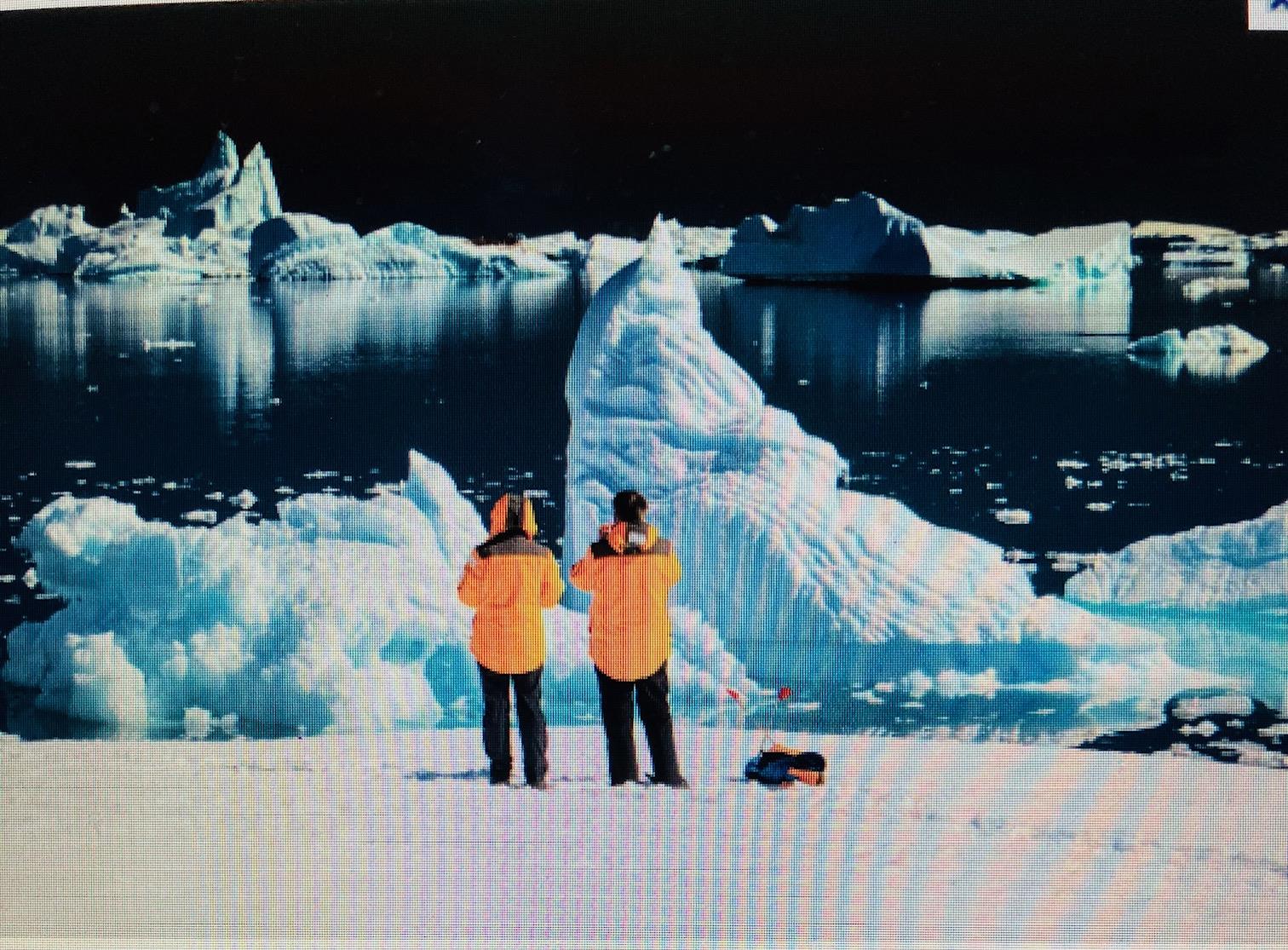 |
Today's speaker Tony Molyneux was introduced by Michael Knight who told us that Tony's and Michael's spouses were members of the Embroiderers Guild. Thus Michael became aware of Tony's involvement in Antarctic expeditions and invited him to come to our club as a guest speaker.
 |
An employee of Antarctic Division Journeys, Tony took us through a series of spectacular slides helping us to get a good understanding of the terrain and freezing conditions on this great continent. Since 1983 Tony has been variously coordinating expeditions to Casey Station, resupplying stations including Davis and Mawson, working with logistics to establish the Blue Ice Runway.
Australia has two Icebreaker Ships, Polar Bird and Aurora Australis which was built in Newcastle NSW. These Icebreakers provide a very rough ride until they get to the ice when they literally ride onto the ice crushing it and therefore making for a much smoother transit. They don't have a keel, hence the extreme motion in the southern ocean.
 |
One interesting point about Icebergs Tony told us is that they melt faster underwater than they do on top. Because most of the Iceberg is underwater they eventually become top heavy and flip over so you don't want to be too close when that occurs.
The trip from Hobart to Casey Station via Macquarie Island traverses the Roaring Fortys, "Filthy Fifties" and the "Screaming Sixties". It takes 6 days to reach Casey and 14 days to reach Mawson. Herd Island, like Antarctica itself, is claimed by Australia as its territory. A claim recognised by only four other nations. Herd Island is Australia's only active volcano. It is 55 metres higher than Mt Koziusko and last erupted in 2018.
Macquarie Island is an uplift of the ocean floor and so is an ideal place to do research. It is World Heritage listed and has been returned to a vermin free place after much effort.
The abundant wildlife includes Souther Right Whales, Penguins, Elephant Seals, Seals which all looked healthy and thriving in the pictures we were shown.
 |
Staff are required to wear specialist gear in both Summer and winter. The outside temperature in Summer is as low as minus 18 and as high as minus 4. Blizzards can set in very quickly and so guide ropes are placed strategically to allow staff to find their way to shelter if there is a whiteout.
The Australian stations run their internal temperatures at a comfortable 18 degrees c. Sikorsky helicopters are used for quick transport between bases and to transport fuel and goods. The first female engineer has broken the ice and was responsible for the fleet of choppers. There are operating theatres on the hosts and stations but accidents can cause real dramas.
President Darren thanked Tony for his very informative talk and bringing to our realisation just how harsh and beautiful the Antarctic environment is. Members warmly applauded Tony in support of Darren.